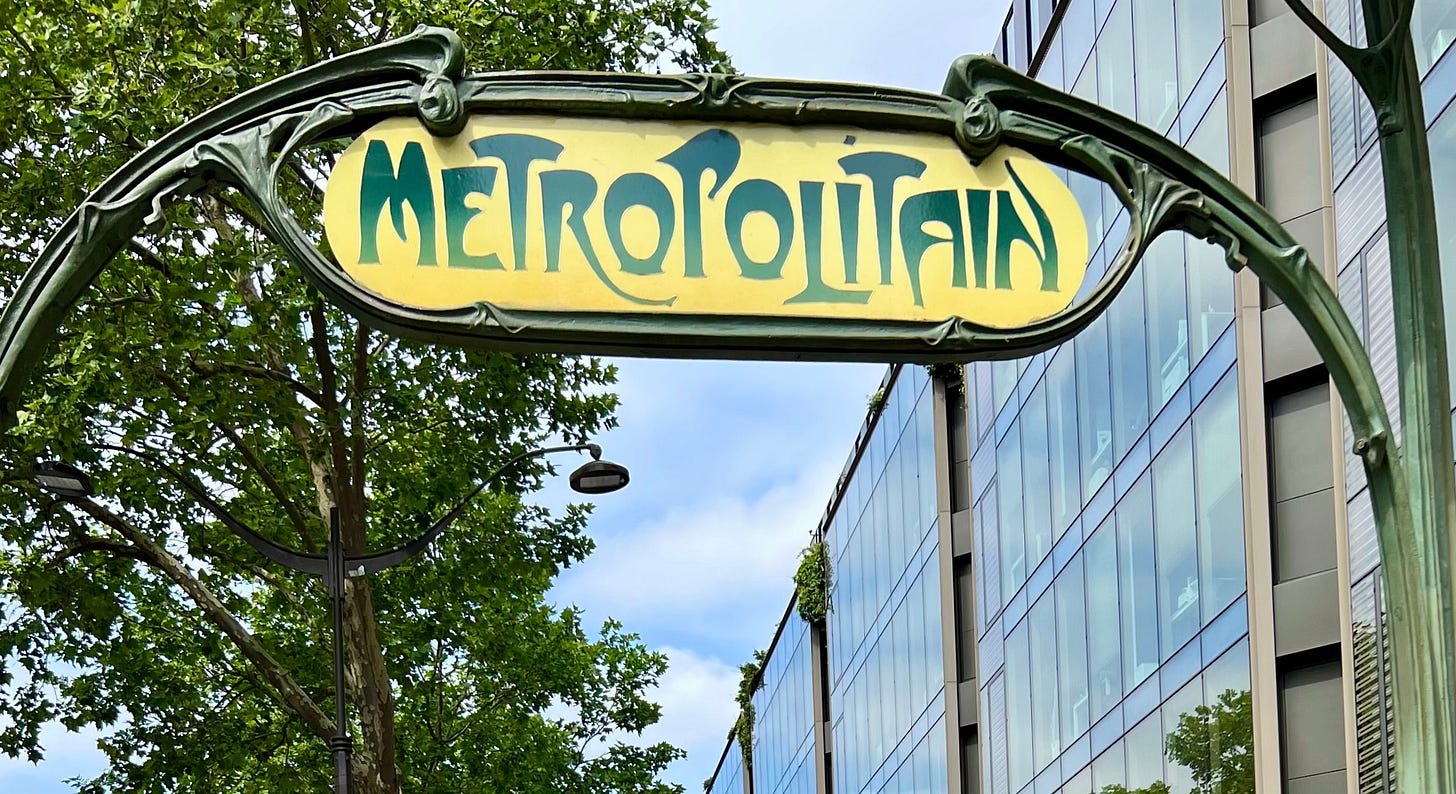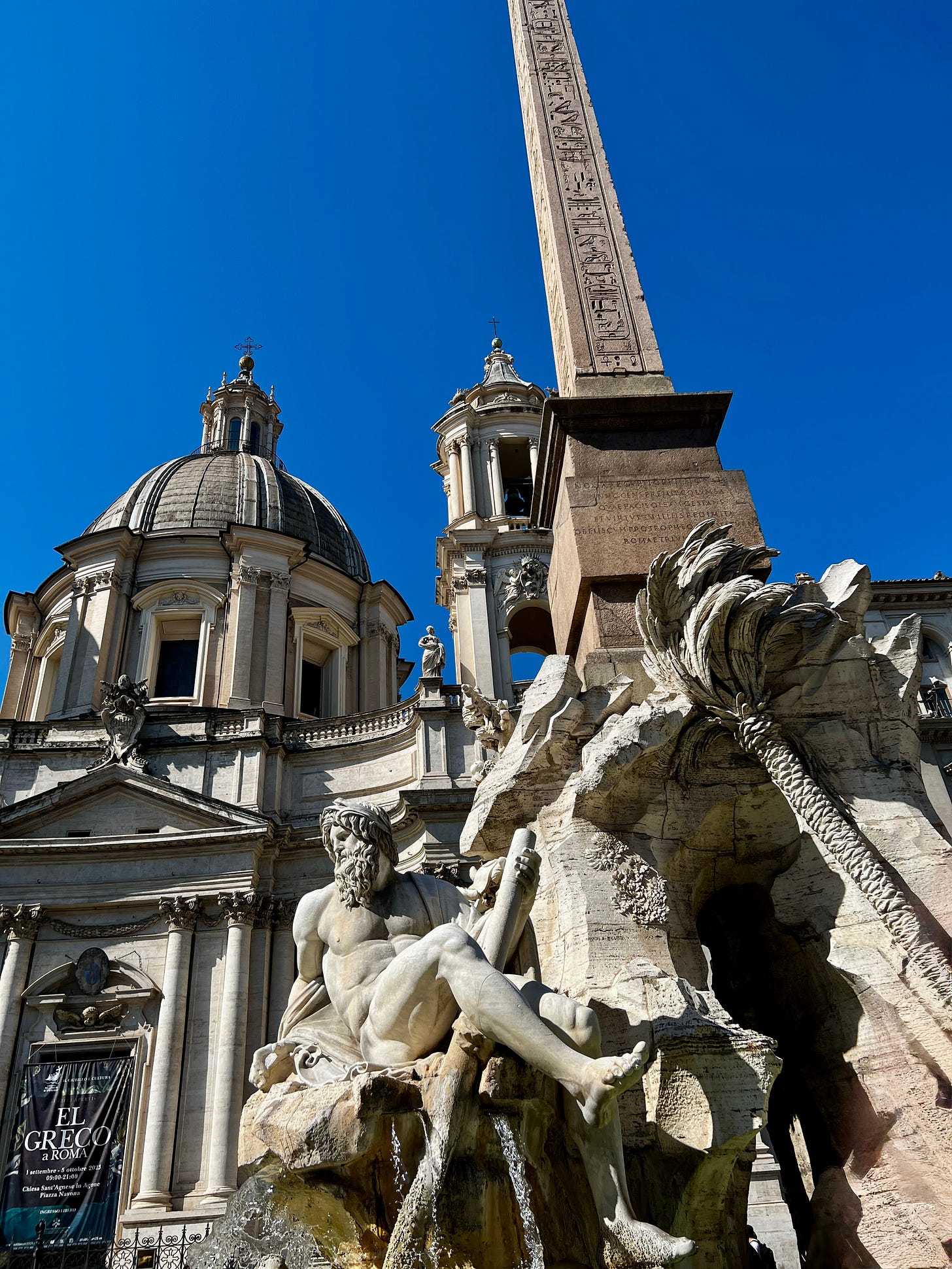On our last two trips to Europe, we opted for apartments over hotels—a departure from our usual choices while traveling abroad. B and I subscribe to the philosophy of slow travel, preferring to experience a place deeply rather than widely. We have found that there are rewards to opening ourselves up to the chance encounters of unhurried immersion. Even the quotidian, like grocery shopping, isn’t a dreaded chore when done in a place that isn’t our home town.
When we went to Paris, we stayed in Montparnasse, on the Left Bank of the Seine. In the early 20th century, Montparnasse was the neighborhood of choice for artists and writers, attracting the likes of Pablo Picasso, Simone de Beauvoir, Jean-Paul Sartre, and Ernest Hemingway. That the neighborhood was named after "Mount Parnassus," the home of the Muses in Greek mythology, is very fitting.
We booked our apartment with Cobblestone Paris Rentals, a small company recommended by Rick Steves’ Europe Through the Back Door. If you’re unfamiliar, Rick Steves is an American travel writer and guidebook author, best known as the host of the long-running PBS series Rick Steves' Europe. In both his books and on his shows, he champions a simple, culturally sensitive approach to travel, highlighting independent exploration, connecting with locals, exploring off-the-beaten-path neighborhoods, dining at family-run restaurants, and discovering lesser-known cultural gems.
I've been a Rick Steves fan since I was a girl. Growing up, his PBS shows and books were my gateway to the world beyond my bedroom. I’d sit cross-legged in front of my TV, captivated by his journeys across Europe, dreaming of cobblestone streets and bustling piazzas. His show came on before Mutual of Omaha’s Wild Kingdom, and while the animal escapades were thrilling, it was Rick’s travels—seeing Brunelleschi’s dome in Florence or taking a cable-car to Aiguille du Midi in Chamonix—that set my imagination afire.
Our Parisian apartment was named Villa Montparnasse and located in the 15th arrondissement. The charming one bedroom was on the second floor, on a side street off Rue de Vaugirard. With the Falguière metro station less than five minutes away and Montparnasse station just a short walk as well, the location gave us a great launching point from where we could get anywhere by metro or foot.
A door painted Bleu de France (a particular shade of bright blue traditionally used to represent France) opened into a courtyard of potted fig trees and fan palms. The apartment, up a quick two flights, featured a fully equipped kitchen, WiFi, and a washer/dryer conveniently located in the bedroom. We found quite a few bistros and restaurants serving varied and delicious cuisine just wandering the neighborhood. There is also a supermarket around the corner—if you haven’t gone to a grocery store when traveling, I highly recommend it. It’s so interesting to me to see and taste different foods. Further down the block is a bakery where the baguette de tradition is utterly perfect.
Each morning, we made it a ritual to pick up a fresh baguette from the bakery down the block. Tearing into its crispy crust felt like savoring a piece of France itself—a baguette de tradition is a symbol of French culture, made under strict regulations with only flour, water, salt, and yeast. Handcrafted daily by artisans, it has a crispy crust, airy center, and rich flavor. In fact, the baguette de tradition is so important to French culture that it was added to UNESCO’s Intangible Cultural Heritage list.
In Rome we rented a top floor apartment in the Regola neighborhood of the 7th rione through Sonder, a hospitality company operating in cities worldwide. In contrast to our Paris experience, where we waited for a Cobblestone representative to grant us entry, Sonder offered seamless check-in and check-out via their app and keyless entry system
Named Campo di Fiori, the apartment was located in an ancient building on Via dei Balestrari. Piazza Campo de’Fiori, one of Rome’s oldest outdoor markets, was at the end of the street. Piazza Navona, built on the site where Circus Agonalis once stood, was nearby as well.
Piazza Navona, one of Rome’s crown jewels, boasts three iconic fountains. Bernini’s Fontana dei Quattro Fiumi symbolizes the great rivers of four continents. Nearby, the Fontana del Moro features a striking Moor figure, while the Fontana del Nettuno was completed centuries after its initial design.
An imposing door opened up into a gated courtyard, narrow granite steps leading us the five flights. The apartment itself was stunning, with thick dark solives criss-crossing the ceilings broken by large skylights. As we stepped inside, a staircase led us to a bright living and dining area, illuminated by a generous skylight. The kitchen and bathroom were to the left, the bedroom to the right. In the kitchen, a staircase led to the second level and another space for additional guests. While it seems that Sonder no longer has the same apartment available, it does have several in Rome.
By choosing apartments over hotels, we tried to fall into the rhythm of daily life. From having a picnic in front of the Trocadero to dancing with strangers when AS Roma scored a goal in the Serie A, these experiences gift us a deeper connection to a place’s culture and people. Because travel is about the experiences born from the spaces we inhabit, the meals we savor, and the people we encounter.







